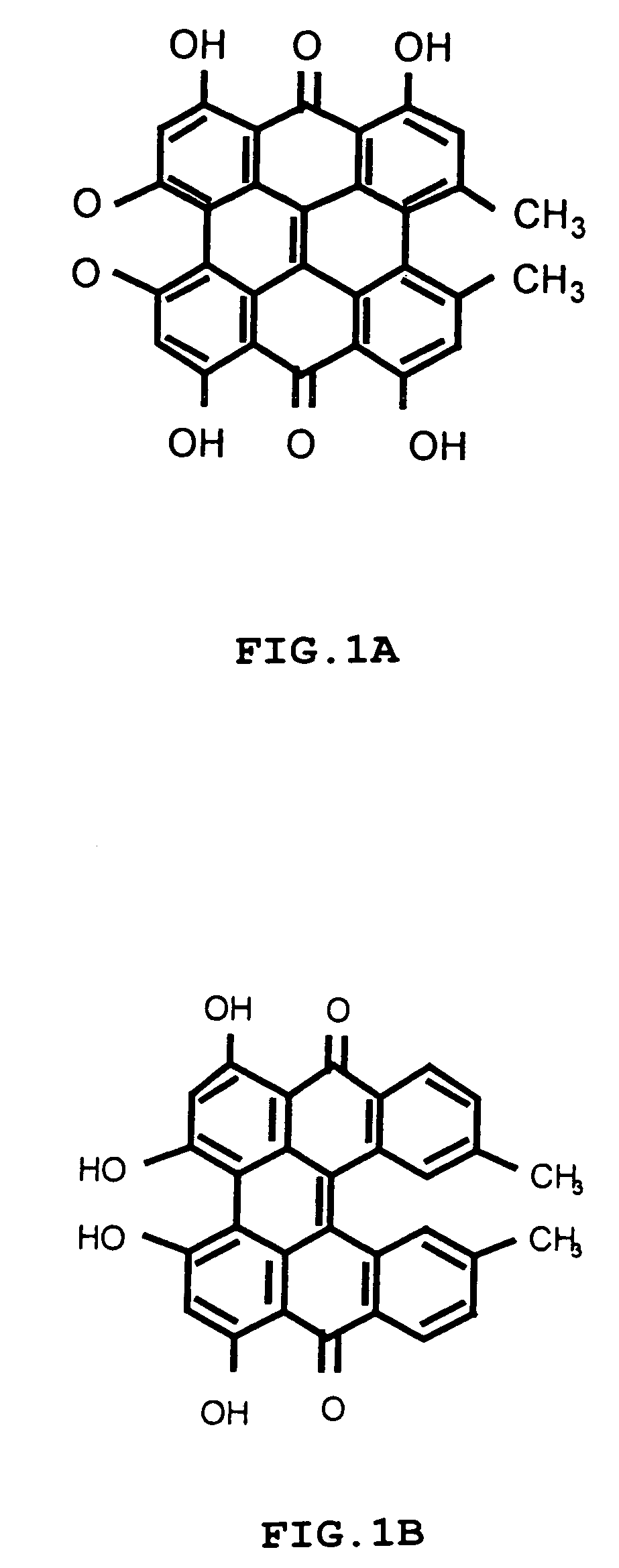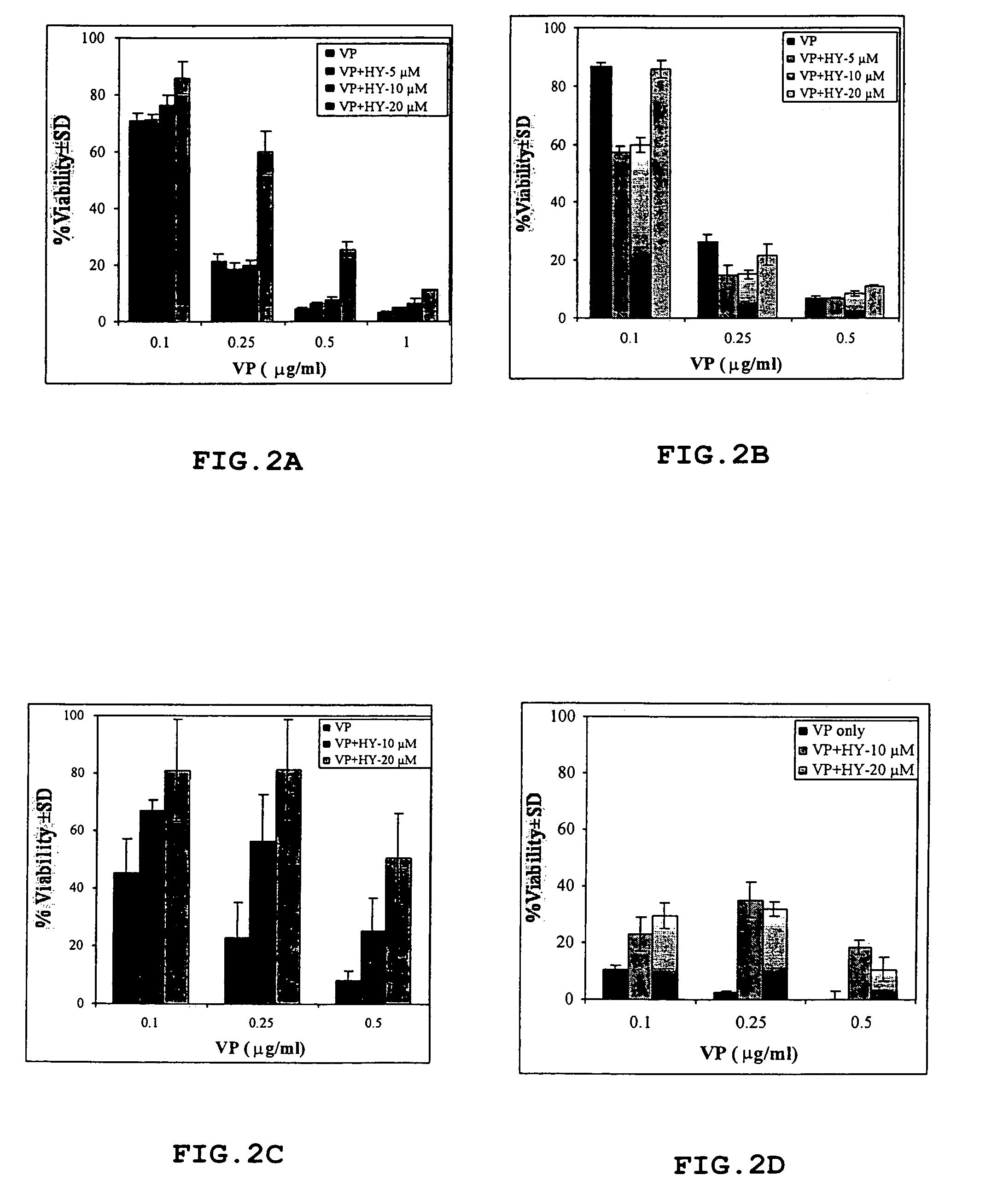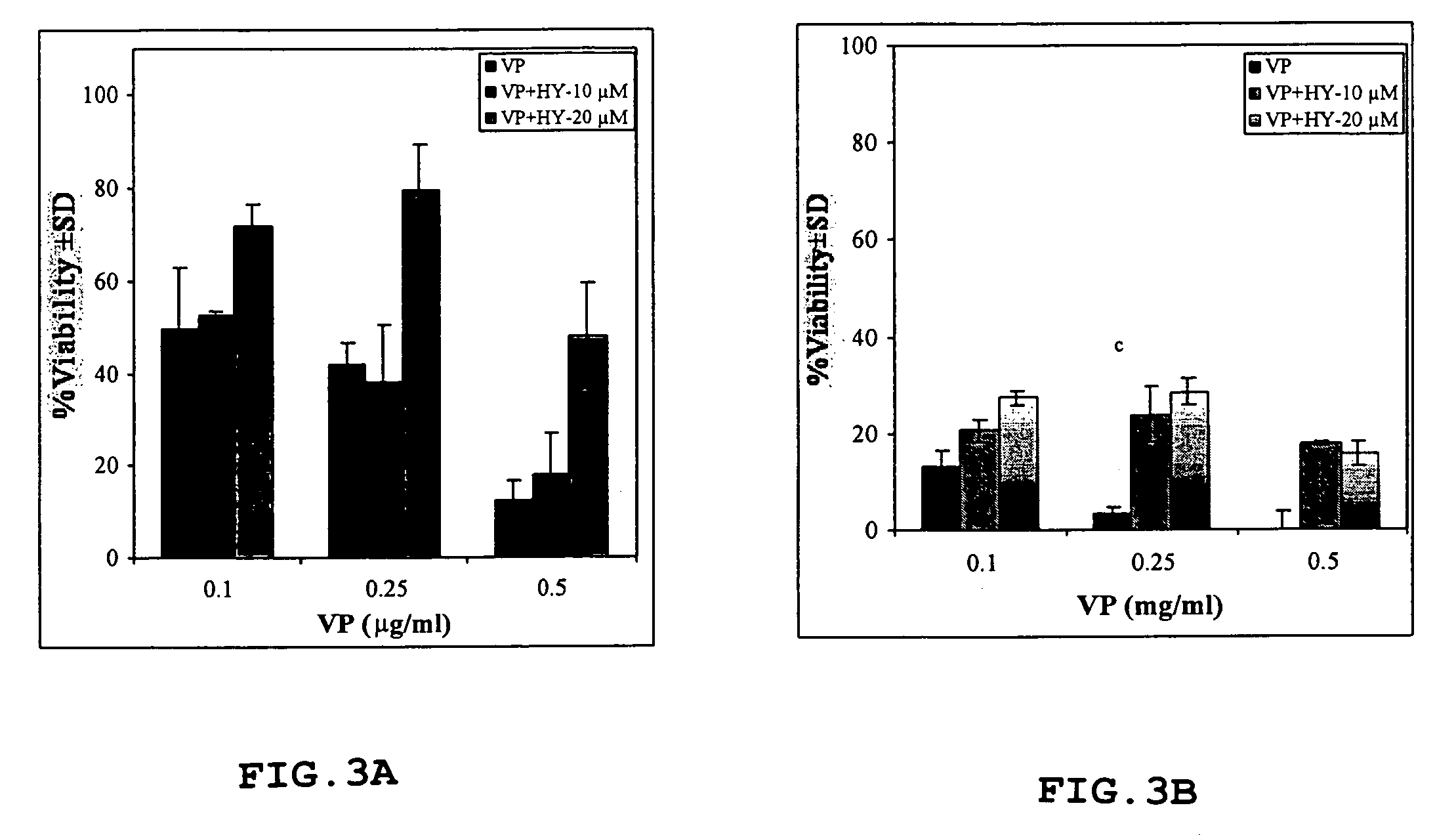Method for preventing or reducing collateral phototoxic damage to neighboring tissues during photodynamic therapy of a target tissue
a target tissue and collateral phototoxic technology, applied in the field of photodynamic therapy, can solve the problems of degeneration of neural retina photoreceptor cells, endangering the pathological vessel, and apoptosis of the retinal pigmented, and achieve the effects of regulating the localized phototoxicity of an effector photoenergetic molecule, and preventing or reducing the adverse effects of photodynamic therapy
- Summary
- Abstract
- Description
- Claims
- Application Information
AI Technical Summary
Benefits of technology
Problems solved by technology
Method used
Image
Examples
example
Materials and Methods
Chemicals
[0040]Hypericin was synthesized by Dr. Y. Mazur, Dept. of Organic Chemistry, Weizmann Institute of Science, Israel, as described previously (Lavie et al., 1999; U.S. Pat. No. 5,120,412). The compound was dissolved in 70% aqueous ethanol to a stock solution of 2 mg / ml from which subsequent dilutions were made in sterile medium to obtain a final ethanol concentration <1%. Verteporfin was obtained from Nvartis Ophthalmics.
Cell Lines and Culture Conditions
[0041]ARPE-19 cells were obtained from the ATCC. The cells were maintained in a medium consisting of equal volumes of HAM F-12 and Dulbecco's MEM, 40 μM glutamine, 100 units / ml penicillin and 100 μg / ml streptomycin (GibcoBRL Life Technologies Ltd, Paisley, Scotland) supplemented with 10% fetal bovine serum (FBS) (ATCC). The cells were grown as monolayers in a controlled atmosphere (37° C., 5% CO2).
Animals
[0042]Male Wistar rats 12–14 weeks of age were purchased from Harlan (Jerusalem, Israel). All experimen...
PUM
| Property | Measurement | Unit |
|---|---|---|
| wavelengths | aaaaa | aaaaa |
| wavelengths | aaaaa | aaaaa |
| concentration | aaaaa | aaaaa |
Abstract
Description
Claims
Application Information
 Login to View More
Login to View More - R&D
- Intellectual Property
- Life Sciences
- Materials
- Tech Scout
- Unparalleled Data Quality
- Higher Quality Content
- 60% Fewer Hallucinations
Browse by: Latest US Patents, China's latest patents, Technical Efficacy Thesaurus, Application Domain, Technology Topic, Popular Technical Reports.
© 2025 PatSnap. All rights reserved.Legal|Privacy policy|Modern Slavery Act Transparency Statement|Sitemap|About US| Contact US: help@patsnap.com



